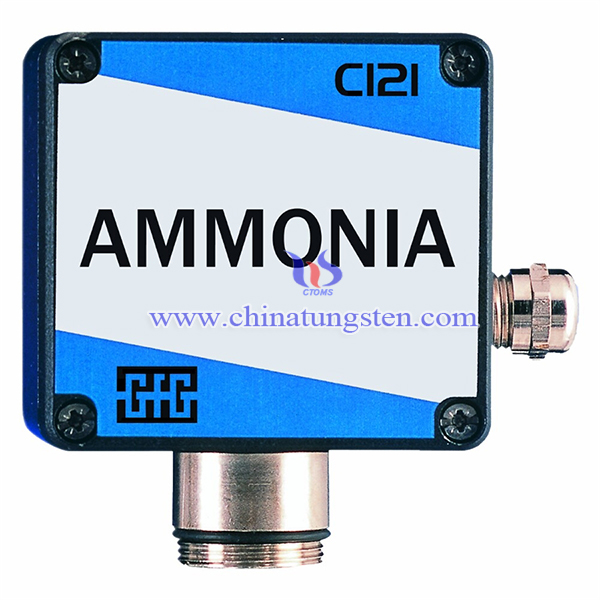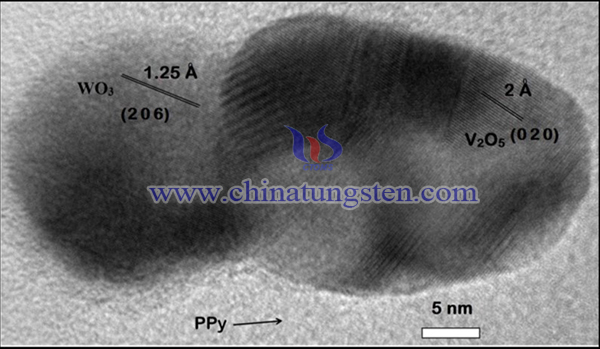Ammonium Paratungstate Applied in Gas Sensing of Ammonia
- Details
- Category: Tungsten Information
- Published on Tuesday, 02 February 2021 19:43
As people pay more attention to indoor air pollution, feasible gas sensor that operates at room temperature has caught huge interest. Conventional materials applied in home gas sensing include polypyrrole (PPy), polythiophene (PTh), polyaniline (Pani).
However, a higher sensitivity, selectivity and exemplary response-recovery characteristics were in need. Thus, ammonium paratungstate had been applied in gas sensing of ammon ammonium paratungstate applied in gas sensing of ammoniaia, a composite material consisting of vanadium(V) oxide (V2O5) tungsten trioxide (WO3) with conducting polymer PPy have been prepared and investigated its gas sensing properties to ammonia (NH3) at room temperature. The synthesis procedures are as below:

Pyrrole (PPy), Iron III chloride (FeCl3), ammonium paratungstate hydrate (APT), ammonium metavanadate (NH4VO3), cetyltrimethyl ammonium bromide (CTAB), ammonium persulfate (APS), nitric acid, citric acid, hydrochloric acid (HCl), acetone, ethanol were of analytical grade and without further treatment.
Simple oxidative polymerization method was used here to prepare well dispersed polypyrrole nanoparticles. In a typical experiment, 0.1 mol (M) of pyrrole monomer, 0.1 M of HCl and 0.01 M of CTAB were dissolved uniformly in 100 mL of DD water. Subsequently100 mL of DD water with 0.1 M of APS as oxidizing agent was added in a controlled manner to the above solution under vigorous stirring. Then the reaction was monitored for overnight under stirring at 200 rpm. The colour of solution convert from brown to dark black point out the polymerization of pyrrole monomer. After that the precipitate was collected and washed with water and acetone to remove the unreacted residuals and oligomers. Finally, the obtained material was dried under vacuum at 80 °C for 8 h.
For the synthesis of tungsten oxide nanoparticles a simple co precipitation method was adopted as reported elsewhere. 0.1 M of ammonium paratungstate was mixed in 40 mL of nitric acid under stirring at 80 °C. Afterwards, 0.2 M of citric acid was added to the solution and maintained the temperature at 80 °C until the formation of a yellowish precipitate. The precipitate was collected and repeatedly washed with water and ethanol. Finally obtained material was calcined at 450 °C temperature with a speed of 3 °C per minute.
For the Synthesis of V2O5 nanoparticles, 0.1 M of ammonium metavanadate was dissolved in 100 mL of DD water. 0.1 M of HCl was added to the precursor solution. The colour of the solution changes to white. Obtained precipitate was centrifuged and cleaned using conventional processes and the product was calcined in presence of ambient atmospheric conditions at 500 °C to get the final dark orange colour V2O5 nano particles.

Typically prepared 0.05 g of V2O5 and 0.05 g of WO3 nano particles were added in the 100 mL DD water and kept in ultrasonication for 1 h. During sonication particles were dispersed and the colour of the solution seems to be a light orange colour. After sonication the solution was transferred for polymerization with pyrrole monomer. This solution was constantly stirred at 500 rpm for overnight and finally dried at 80 °C under vacuum for 8 h to prepare the casting solution. Characterizations carried out using the UV–vis, FTIR, XRD, XPS, SEM, HR-TEM, AFM analysis techniques.
In summary, ammonium paratungstate has been applied in gas sensing of ammonia, the PPy-V2O5-WO3 hybrid nanocomposite has enhanced sensing properties towards selectively NH3 with ultrahigh sensitivity of 85 % with response time of 73 s and recovery time 101 s.
- APT Manufacturer & Supplier, Chinatungsten Online: ammonium-paratungstate.com
- Tungsten News & Prices of China Tungsten Industry Association: www.ctia.com.cn
- Molybdenum News & Price: news.molybdenum.com.cn
- Tel.: 86 592 5129696; Fax: 86 592 5129797; Email: sales@chinatungsten.com



 sales@chinatungsten.com
sales@chinatungsten.com